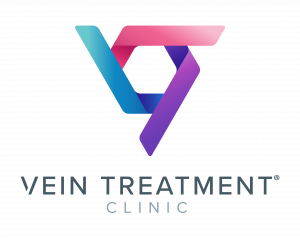Trump and Chronic Venous Insufficiency: A Closer Look at the Condition Affecting Millions
Understand what’s behind President Trump’s CVI diagnosis, what this means and what the possible outcomes can be.
NEW YORK, NY, UNITED STATES, July 23, 2025 /EINPresswire.com/ -- Recently, President Donald Trump has been diagnosed with Chronic Venous Insufficiency (CVI), but what does this mean?Chronic Venous Insufficiency occurs when veins in the legs are unable to properly return blood to the heart, often due to weakened or damaged valves.
This results in blood pooling in the legs, causing symptoms such as swelling (which seems to be his case, according to the official announcement), heaviness, leg cramps, and varicose veins. In more severe cases, untreated CVI can lead to ulcers and even blood clots, such as deep vein thrombosis (DVT).
What Causes CVI?
CVI typically results from risk factors such as age, prolonged standing or sitting, obesity, genetics, or a history of blood clots. While it’s most common in people over 50, anyone can develop the condition, regardless of age or gender. Unfortunately, many people mistake the early symptoms of CVI, such as leg swelling and fatigue, as simply signs of
aging.
CVI is Not Contagious; it’s genetic
It’s important to note that CVI is not contagious. It’s a mechanical issue with the veins, not a viral infection. The condition cannot be passed from person to person, and there is no need for concern about its spread.
What Happens if CVI is Left Untreated?
While CVI itself is not fatal, untreated cases can lead to significant complications. Persistent symptoms can worsen over time, leading to the development of painful ulcers and the increased risk of blood clots. If left untreated, the condition can also severely impact quality of life, causing discomfort and limiting mobility.
Treating CVI
The good news is that CVI is highly treatable. A range of minimally invasive treatments, such as sclerotherapy, laser ablation, and radiofrequency ablation, among others, can effectively manage the condition. These treatments aim to close off damaged veins and reroute blood flow through healthier veins, offering relief from symptoms with minimal
recovery time.
“We encourage anyone experiencing symptoms of chronic venous insufficiency (CVI) to seek medical advice as early as possible” says Dr. Michael, board-certified vein expert at the Vein Treatment Clinic. “Early diagnosis through a simple, non-invasive vein scan can prevent complications and provide a clear path toward effective treatment.”
Should You Get Screened for CVI?
If you experience symptoms like leg swelling, aching, visible veins, or restless legs, it’s important to schedule a vein scan with a specialist. It is quick, painless, and often covered by insurance. Regular checkups ensure that CVI is caught early, leading to better treatment outcomes and improved quality of life.
For more information about CVI and treatment options, or to schedule a consultation,
Please get in touch with The Vein Treatment Clinic at 855-401-6081 or visit their website.
Vein Treatment Clinic
855-401-6081
www.veintreatmentclinic.com
Dr. Caroline Novak
Vein Treatment Clinic
email us here
Visit us on social media:
Instagram
Facebook
YouTube
TikTok
Complete Guide of Chronic Venous Insufficiency: Symptoms, Causes & Treatments
Legal Disclaimer:
EIN Presswire provides this news content "as is" without warranty of any kind. We do not accept any responsibility or liability for the accuracy, content, images, videos, licenses, completeness, legality, or reliability of the information contained in this article. If you have any complaints or copyright issues related to this article, kindly contact the author above.

